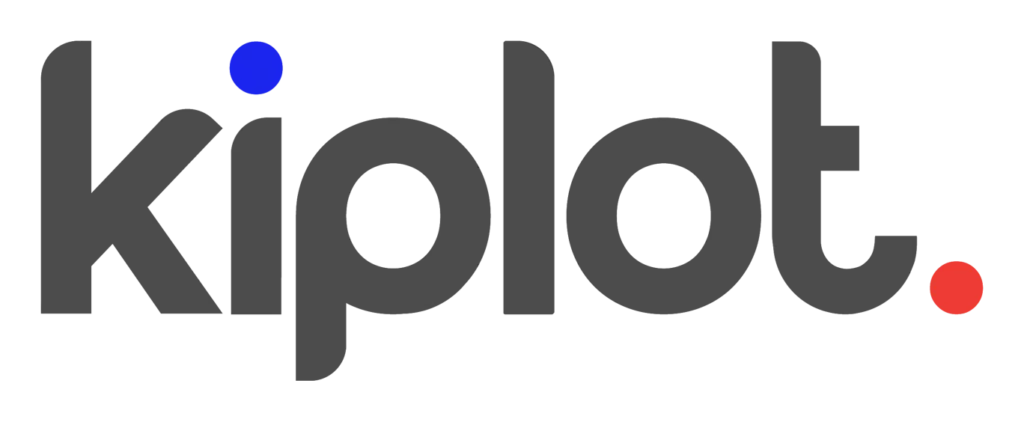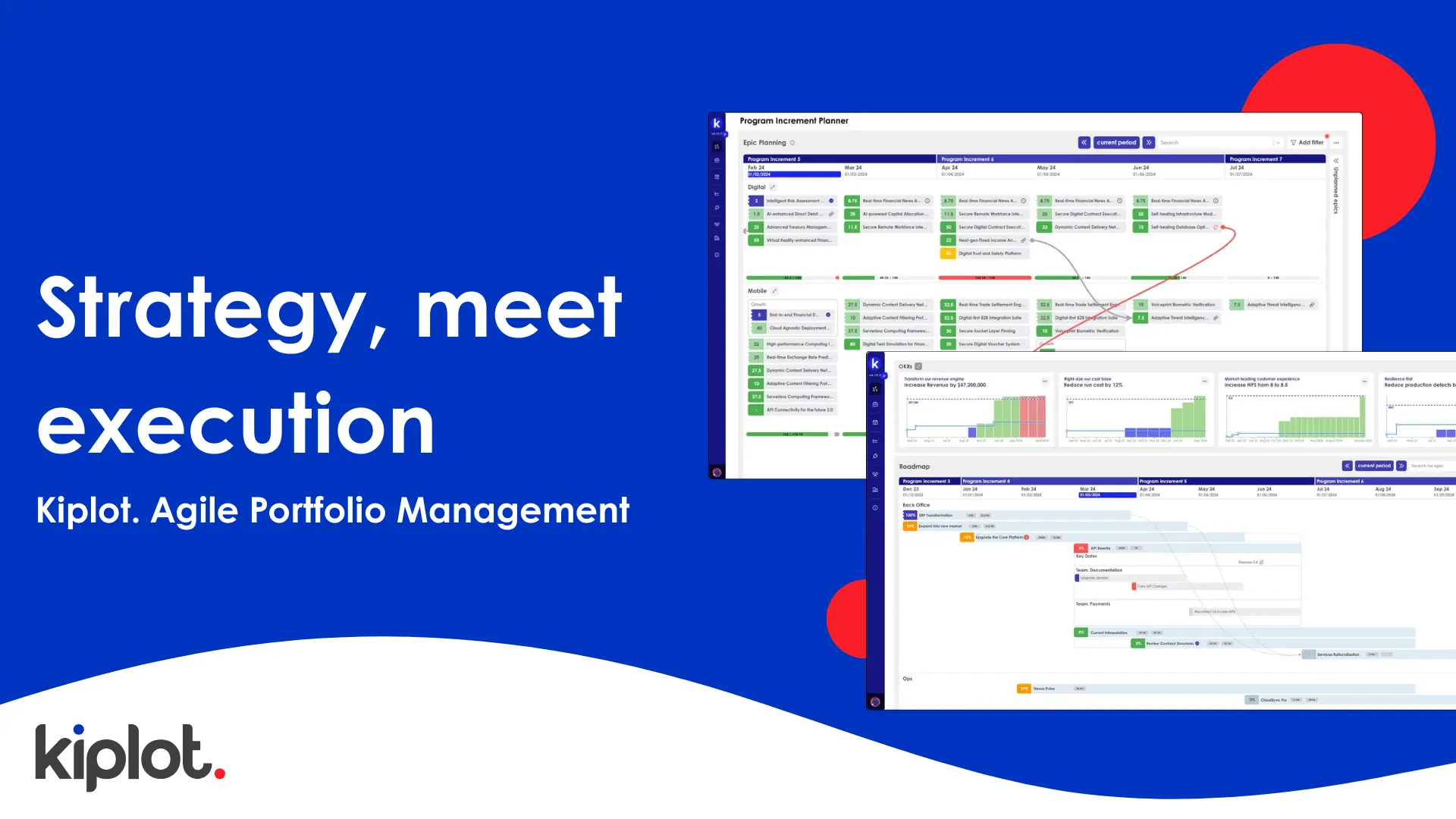Getting your lifecycle right can be the difference between an organization bogged down in endless governance and a well oiled machine that prioritizes compliance, resilience and rigor. The right lifecycle stages ensure work moves efficiently, decisions happen at the right time, and governance enables rather than restricts progress.
Remember – this is a solved problem. It’s imperative that you avoid completely inventing your own lifecycle. In this article, we have captured the 4 most common and effective lifecycles so that you can lift, shift and tweak to suit your organization’s needs.
What is the difference between a stage gate and a phase?
Emphasizing this distinction in your internal communication is critical to avoiding confusion. Where a phase is a defined stage in a process where work is carried out (e.g., planning, execution, testing), a stage gate is a decision point between phases where progress is reviewed, and approval is required to move forward.
Does Agile do away with stage gates and phases?
No! Generally speaking, Agile, especially in the enterprise context does not do away with stage gates. Agile implicitly recommends reducing the number of stage ages, and the way they are enforced, but it does not necessarily mean doing away with them entirely.
Read on to explore best practice ways to govern agile initiatives through a combination of stage gates and guardrails.
image:borderless
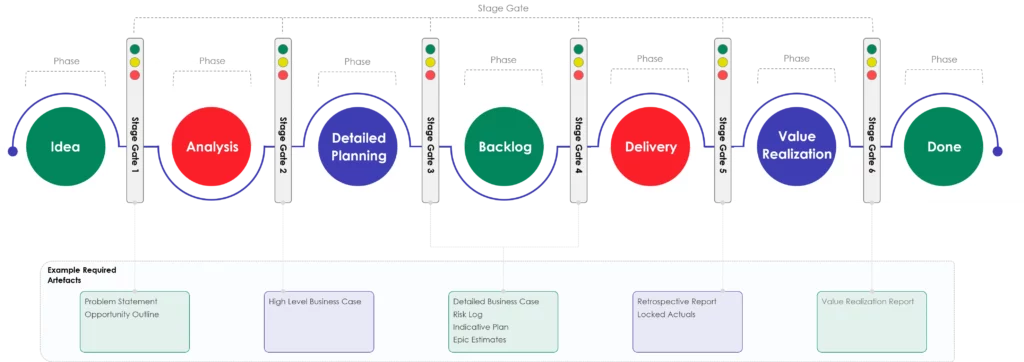
1. Traditional Vanilla Flavor
The Traditional Waterfall model follows a linear, sequential approach, where each phase is completed before the next one begins. It typically includes Initiation, Design, Build, Test, Implement, and Close, with Stage Gates acting as approval checkpoints. This method is best suited for projects with well-defined requirements and minimal expected change.
Top 3 Pros ✅
- Clear structure – Easy to plan and manage with well-defined phases and milestones.
- Predictable outcomes – Works well for projects with stable requirements and minimal scope changes.
- Strong documentation – Ensures comprehensive records, making compliance and audits straightforward.
Top 3 Cons ❌
- Inflexible to change – Late-stage changes are costly and difficult to accommodate.
- Risk of rework – Issues may only surface late in the project, requiring significant rework.
- Delayed feedback – Stakeholders don't see working outputs until the later stages, increasing the risk of misalignment.
image:borderless

2. Traditional Prince2 Flavor
PRINCE2 provides a structured, stage-based lifecycle with defined decision points. It begins with Starting Up a Project (SU) for feasibility assessment, followed by Initiating a Project (IP) for detailed planning. The Delivery stage consists of managed phases, with Stage Boundary Reviews ensuring business justification at key milestones. Finally, Closing a Project (CP) ensures formal project closure and knowledge transfer.
Top 3 Pros ✅
- Strong governance – Ensures controlled decision-making and alignment with business objectives.
- Clear accountability – Defined roles and responsibilities across all stages.
- Scalability – Works well for large organizations handling multiple projects.
Top 3 Cons ❌
- Can be bureaucratic – Heavy documentation and approvals may slow execution.
- Less Agile-friendly – Works best in structured environments rather than iterative workflows.
- Overhead for small projects – The governance structure may be overkill for simple initiatives.
image:borderless
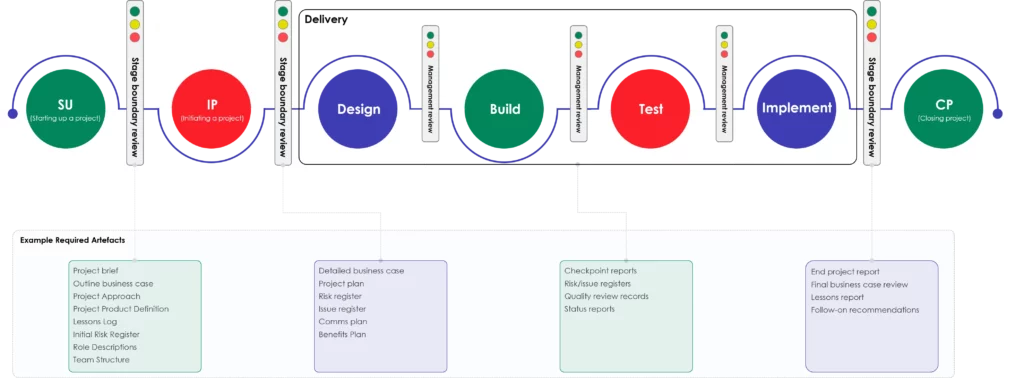
3. SAFe (Scaled Agile Framework)
SAFe (Scaled Agile Framework) is designed to scale Agile practices across large organizations, providing a structured yet flexible approach for aligning teams. It includes Program Increments (PIs), Agile Release Trains (ARTs), and continuous delivery to ensure consistent value delivery across multiple teams.
Top 3 Pros ✅
- Alignment – Ensures coordination across teams, departments, and business units.
- Flexibility – Combines structure with Agile principles to support continuous delivery.
- Business Agility – Enables quick response to changes and faster value delivery.
Top 3 Cons ❌
- Complex to Implement – Requires significant upfront investment in training and tooling.
- Process Overload – Can feel bureaucratic, with numerous meetings and ceremonies.
- Over-Standardization – Rigid structures may stifle flexibility and innovation in some contexts.
image:borderless
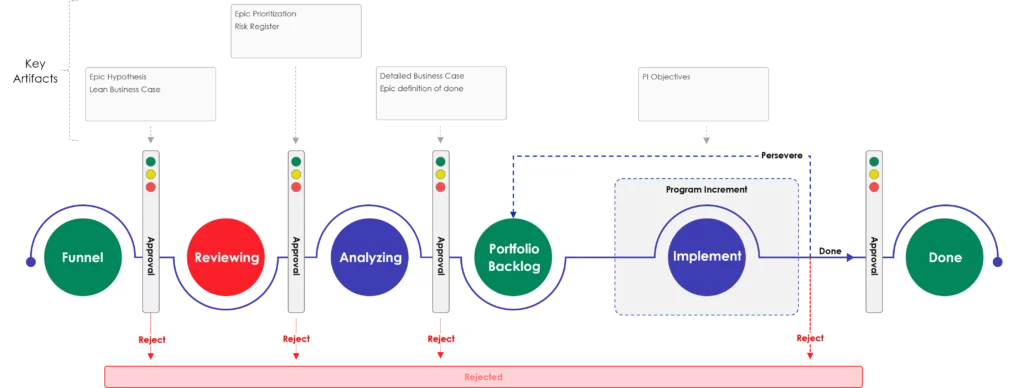
4. Hybrid (Wagile Organizations)
Wagile combines structured Waterfall governance with Agile execution, allowing teams to choose the best delivery approach for different types of work. Central governance ensures strategic alignment, while Agile teams have flexibility in how they manage execution.
One of the most important parts of getting this workflow right is defining the Epic lifecycle within the “In Progress” agile box. We haven’t tackled that in this article – but have a look at the Knowledge Center for more information on this.
Top 3 Pros ✅
- Best of Both Worlds – Balances structured planning with iterative execution for adaptability.
- Strategic Oversight – Central governance ensures alignment with business objectives.
- Flexibility in Execution – Agile teams can tailor workflows based on the complexity of each initiative.
Top 3 Cons ❌
- Potential for Misalignment – Without strong coordination, Agile and Waterfall elements may clash.
- Governance Overhead – More decision gates can slow down Agile teams if not managed well.
- Complexity in Implementation – Requires clear roles, responsibilities, and communication to avoid friction.
image:borderless
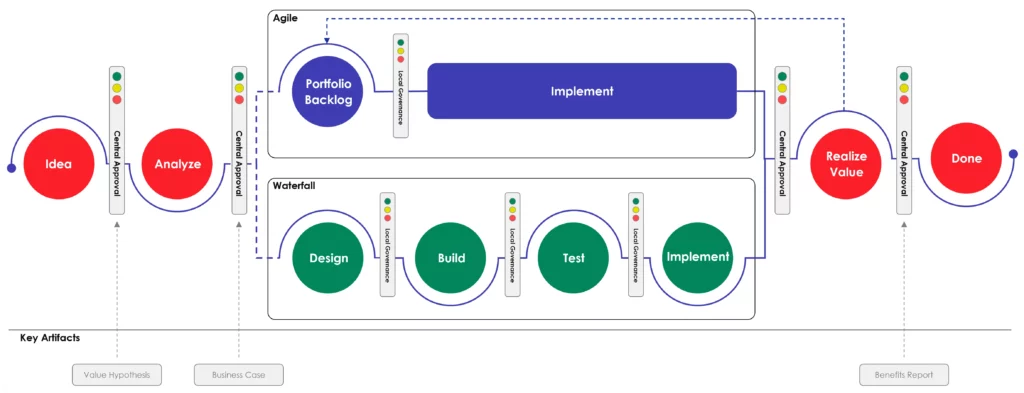
Further Reading: Approvals
Interested to take a more in depth look at approvals? Read this next: Rethinking approvals: How guardrails enhance agility in enterprise organizations.
